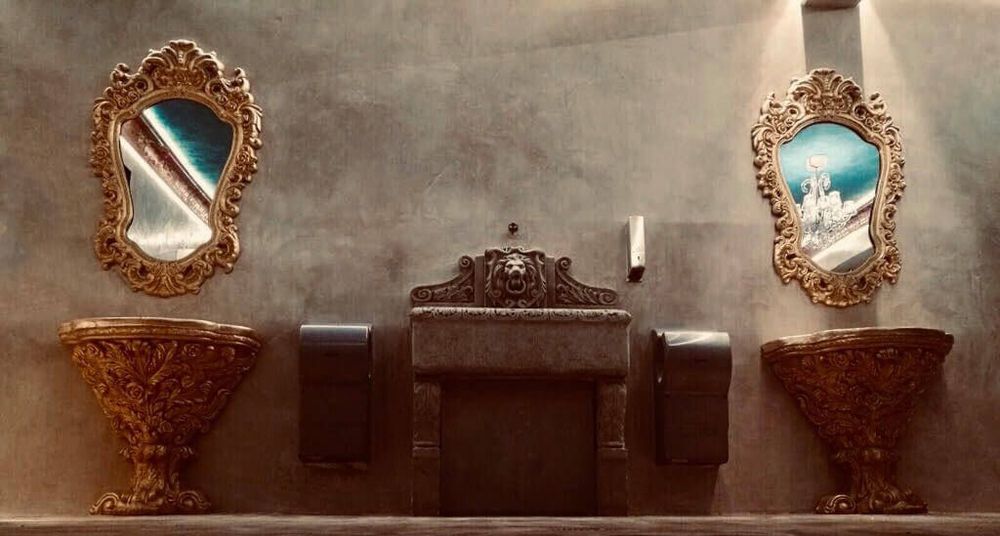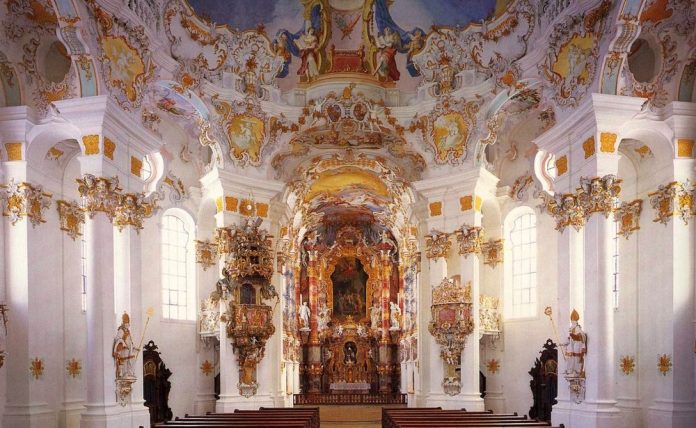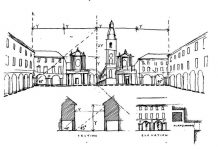Toward the end of the baroque period architects and, especially, interior designers turned away from the grandiose effects that sometimes dominated baroque architecture and produced a style with an altogether lighter touch, drawing especially on natural motifs, pale colors and gilding. This is the style known today as rococo, a style that has had a huge impact not just on architecture, but also on the design of all types of items from furniture to ceramics.
In some histories of architecture rococo is treated as a final stage of the baroque, while others see it as a style in its own right. Its distinctive features are the widespread use of S-shaped and C-shaped curves, often used very freely and loosely; generous applications of gilding; bright colors set against a pale or white background; and motifs drawn from nature, such as bunches of flowers, garlands of fruit and shells. As a rule symmetry, which had been a watchword in both classical and baroque design, was less important, and asymmetrical effects were taken up with enthusiasm.
Rococo interiors
The rococo began as a French style. Painters, sculptors and interior decorators in France took it up from around 1690. It was seen first in the work of French designer Pierre Le Pautre, who worked for the architect Hardouin Mansart at several royal palaces, and popularized in a fashion for asymmetrically woven textiles, whose off-beat patterns have earned them the name “bizarre silks.”
Stucco
Stucco is a type of plaster traditionally made of a mixture of sand, lime and water. It was widely used in both baroque and rococo—indoors and out—as a smooth, durable and weatherproof wall covering and as a means of decoration (below). Its decorative potential was much appreciated by baroque and rococo artists, who valued it because it could be applied to create smooth curves—ideal for creating the fluid spaces of 18th-century buildings—and for its sculptural quality. In rococo interiors where a trompe l’oeil effect was required, stucco could be used to create sculptures or reliefs of figures such as putti in a ceiling or flowers or fruit apparently growing up a wall. It was thus an ideal material for creating the types of illusions that rococo designers held so dear.

After about 1730 the rococo started to spread beyond France, as patrons and designers alike began to appreciate the more delicate style of the Louis XV period. Fabrics and engraved illustrations took it deep into Germany and Central Europe, where it influenced the decoration of diverse buildings. The great churches of Bavaria, in which curvaceous baroque space is combined with delicate rococo painting and gilding, are one result of this visual traffic. Some of the rooms in Czech castles and palaces, such as the Masquerade Hall in the castle of Cesky Krumlov, its walls covered with trompe l’oeil masked figures, are another. Other Central European interiors evoke pastoral settings— country views, shepherds and farm scenes—in keeping with the fashion for pastoral in poetry and for aristocrats attempting to go back to nature by dressing up as shepherds.
Chinoiserie
The 18th-century vogue for all things Chinese (see Orientalism) was also at least in part influenced by the rococo movement. Like the rococo itself, the European interpretation of Chinese decoration was exotic, delicate and curvaceous. It was also far from authentic. European designers did not reproduce Chinese porcelain, furniture or buildings, they created their own versions of them, versions that were increasingly fanciful and remote from the originals. Motifs such as dragons, Chinese landscapes and people dressed in the Western idea of Chinese costume were all popular and sat comfortably beside other rococo elements.
“Thus it has happened … we must all seek the barbarous gaudy goût of the Chinese; and fat-headed Pagods and shaking Mandarins bear the prize from the greatest works of antiquity…” Mrs. Elizabeth Montagu, letter of 1749
Rococo façades
Rococo also traveled to Russia, where its ideas influenced building exteriors as well as interiors, as a result of the imperial family looking to France and Italy for a dose of sophisticated and up-to-date culture. A notable example of this is the Catherine Palace in Tsarskoye Selo. The long façades of this vast imperial summer palace of the mid-18th century glisten with pale stucco and rich goldwork. It was the brainchild of Italian-born Francesco Bartolomeo Rastrelli, who was also the principal architect of the St. Petersburg Winter Palace and numerous other Russian palaces in baroque and rococo styles.
An ephemeral style
In other places, such as Britain, rococo did not take a firm hold, but had an influence on certain aspects of architecture and design, from the ornate furniture of Thomas Chippendale to the creations of the developing porcelain industry. Interiors and buildings decorated in the Chinese taste—delicate and exotic like the rococo—were also part of the general change in taste in the 18th century. But some of the best examples of British rococo decoration that were produced, including the structures in London pleasure gardens such as Vauxhall, have long since been demolished.
In most places rococo was a short-lived style, which took certain decorative trends in the baroque to extremes. It could often be whimsical, which suited the tastes and the pockets of aristocratic patrons who also had a taste for the filigree lightness of the early Gothic revival and for the type of architecture promoted by the later picturesque movement. In the long run, however, it was not so much these movements that replaced it as the coming fashion for neoclassicism.



















